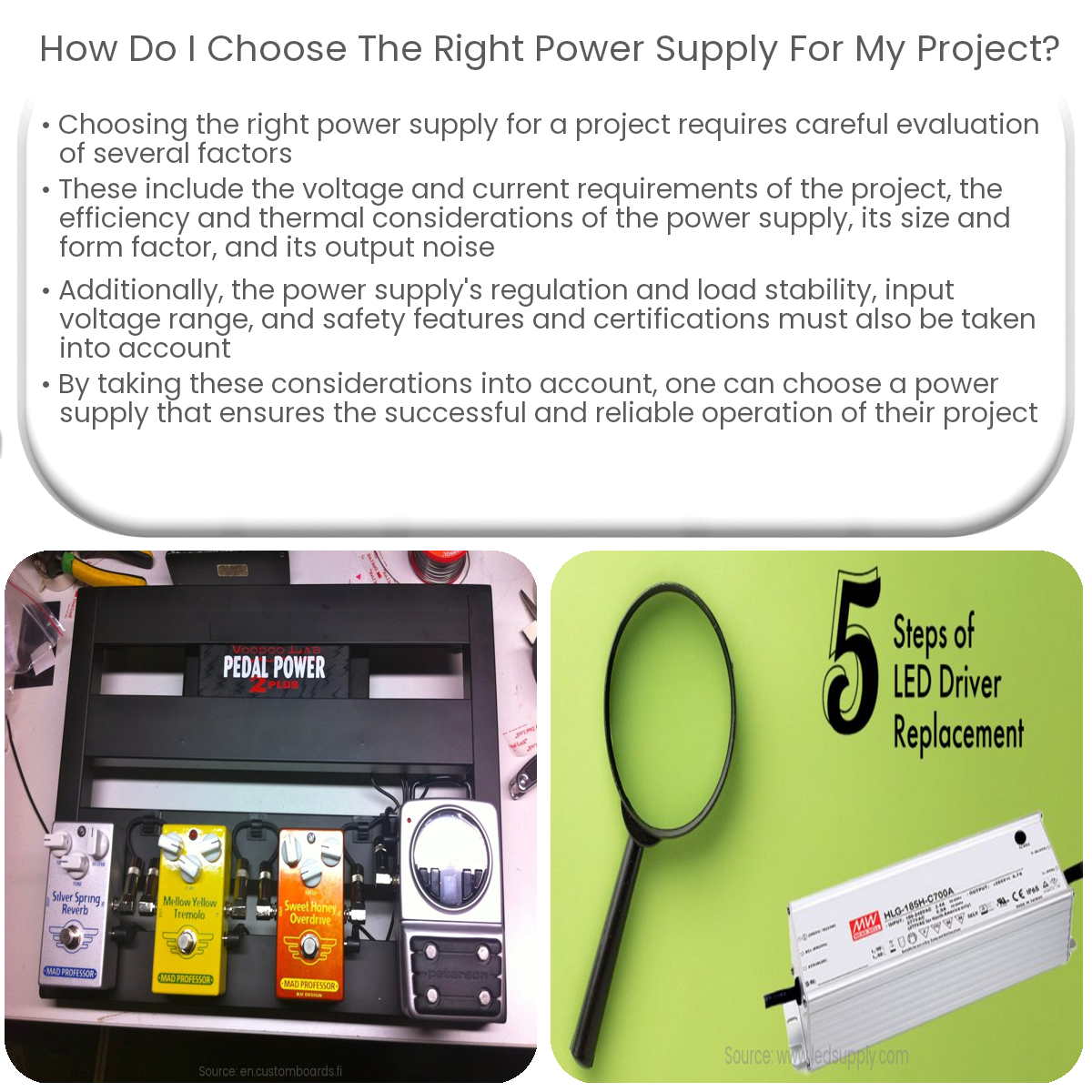Consider voltage, current requirements, efficiency, size, output noise, regulation, input voltage range, and safety features when choosing a power supply.
Choosing the Right Power Supply for Your Project
Selecting the appropriate power supply is a crucial step in ensuring the successful operation and longevity of your electronic project. This article will outline the factors to consider when choosing a power supply for your specific needs.
1. Determine Voltage and Current Requirements
Identify the voltage and current requirements of your project by consulting the datasheets of the components used in the circuit. The power supply should be able to provide the necessary voltage and current levels without exceeding its rated capacity.
2. Efficiency and Thermal Considerations
Choose a power supply with high efficiency to minimize energy loss and reduce heat generation. Efficient power supplies typically have longer lifespans and require less cooling. Consider the operating environment and ensure the power supply can maintain its performance within the specified temperature range.
3. Size and Form Factor
Consider the size and form factor of the power supply, especially for projects with limited space. Smaller power supplies may have trade-offs, such as reduced efficiency or increased noise levels. Select a power supply that fits your project’s physical constraints without compromising performance.
4. Output Noise and Ripple
For noise-sensitive applications, such as audio or precision measurement circuits, choose a power supply with low output noise and ripple. Linear power supplies typically have lower noise levels compared to switching power supplies but may be less energy-efficient.
5. Regulation and Load Stability
Ensure the power supply has adequate regulation to maintain a stable output voltage under varying input voltage and load conditions. A well-regulated power supply will provide consistent performance and protect your project from voltage fluctuations.
6. Input Voltage Range
Choose a power supply with an input voltage range compatible with your mains supply or battery source. Universal input power supplies can accept a wide range of input voltages, making them suitable for projects that operate in different regions or require flexibility.
7. Safety and Certifications
Select a power supply with the necessary safety features and certifications, such as overvoltage, overcurrent, and short circuit protection. Compliance with industry standards and certifications, like UL, CE, or FCC, can ensure the power supply meets safety and performance requirements.
Conclusion
Choosing the right power supply for your project involves considering factors such as voltage and current requirements, efficiency, size, output noise, regulation, input voltage range, and safety features. By carefully evaluating these aspects, you can select a power supply that meets your project’s specific needs and ensures its reliable operation.


